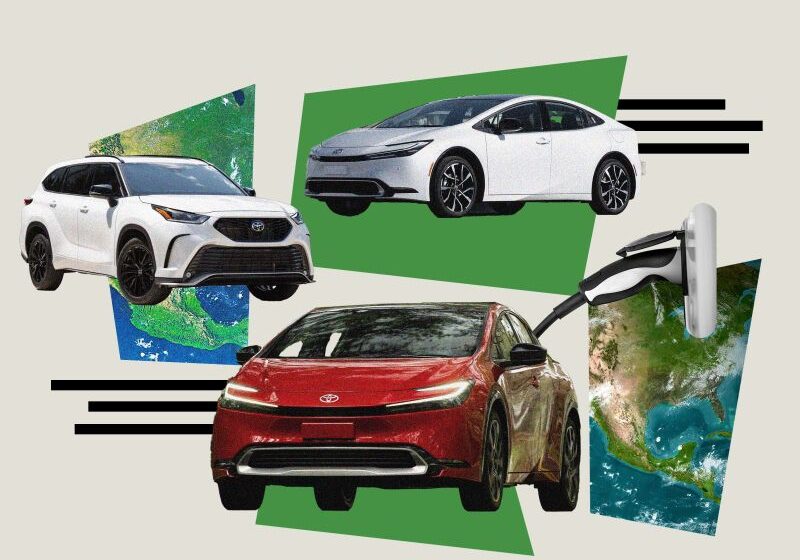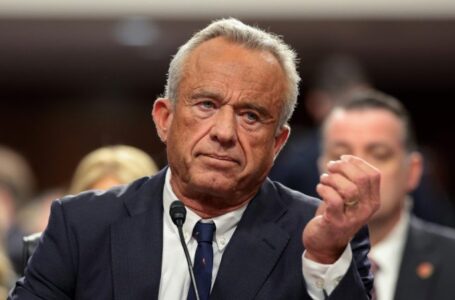Gisèle Pelicot’s ex-husband, imprisoned for raping and drugging her, now caught up in other cases
Toyota is hitting the gas on hybrids as EV sales cool. But what does that mean for the planet?


It was just over a year ago that Toyota appeared to acknowledge it had dropped the ball on electric vehicles. Its CEO, Akio Toyoda, stepped down from his post, painting himself as “an old-fashioned” man unfit to take the world’s biggest carmaker through the electric revolution.
But since then, the Japanese company has done little to embrace a fully electric future, instead sticking firmly to its wildly popular hybrid cars, even though they typically emit more planet-heating pollution than EVs.
Auto experts say the company’s foot dragging on EVs was no fumble, rather, a calculated strategy to give consumers what they want — although EV sales are rising, problems like affordability, battery range and sparse charging stations are dampening growth in demand.
Toyota’s decision to favor hybrids has paid off handsomely: The company is crushing its rivals, including the all-electric Tesla. Globally, it sold 11.2 million cars last year, more than any other automaker. A third were hybrids; fewer than 1% were EVs.
Some experts say Toyota’s lobbying is holding the EV industry back, and Toyota’s plans will have huge implications for global warming. Road transportation accounts for around 25% of global carbon pollution. And as the industry leader, whatever Toyota does, its rivals will consider following.
If Toyota embraced EVs sooner, it would push others in the same direction, said Daniel Sperling, founding director of the Institute of Transportation Studies at the University of California.
“It would put a lot more pressure on Ford or GM to move faster,” he said. “It would pressure EPA to move faster.”
As other automakers start to review their own EV investments, observers are now debating what role EVs and hybrids will have in the future. Those more concerned with the climate crisis are asking a bigger question: what does this all mean for the planet?
Which cars pollute the most?
To know exactly how much planet-warming pollution a car emits, its whole life cycle needs to be taken into account — not only what comes out of the tailpipe, but what it took to build the car and get it to the dealership.
Gas-powered cars, hybrids and EVs all emit roughly the same amount of pollution to manufacture, until you get to producing the battery.
Fully electric cars use large batteries made of materials that require heavy mining. That makes them 40% dirtier to produce on average than hybrid and gas-powered vehicles, one study shows.
But the picture changes over their whole life cycle. Gas-powered cars are the cleanest to make, but are the dirtiest over their lifetimes because their tailpipe pollution is so high.
EVs might be the most carbon intensive to manufacture, but they emit the least carbon pollution over their lifetimes: 40% less than a gas-powered cars. Another study shows that after around two years, the pollution saved by driving an EV offsets the pollution it generated during production.
Hybrids fall in the middle; on average, they produce around 17% more carbon pollution than EVs. But not all hybrids are created equal.
A pure hybrid runs on gasoline and stores excess energy from the brakes, and occasionally from the gas engine, making them more fuel-efficient than regular cars.
Plug-in hybrids, on the other hand, offer the best of both worlds — the reliability and range of a gas car but with less pollution and fuel use, and better affordability than EVs. Plug-in hybrids use EV-like batteries and can typically go for 20 to 40 miles powered by electricity, but they also have fuel tanks and can switch to pure hybrids once the battery is depleted.
Some plug-in hybrids are going head-to-head with EVs on full life cycle pollution. A report from the American Council for an Energy Efficient Economy showed Toyota’s plug-in hybrid, the Prius Prime SE, is the least-polluting vehicle on American roads, according to its 2024 rankings, even compared to EVs. That’s because of a combination of factors, including the Prime’s weight and shape, which make fuel use more efficient.
The Prius Prime is a trophy vehicle for Toyota, because it supports the company’s vision of the future, where consumers have the choice between EVs and these more advanced hybrids.
“Over time, EVs are definitely better, when you look at their overall life cycle, but the challenge is, because they are also considerably more expensive and people can’t necessarily afford them, the number of those vehicles that you can get on the road in the near term is going to be far fewer,” said Sam Abuelsamid, the principal e-mobility research analyst at market intelligence firm Guidehouse Insights.
Of the 14.5 million cars Americans bought last year, just over 1 million were EVs, Abuelsamid said. That means there are millions of people who may not be able to afford EVs but could potentially buy a hybrid, he said. And that would still mean less climate pollution on the road overall.
“Right now, because of supply chain challenges of materials and getting general affordability of electric vehicles down, we can actually have a greater overall (climate) impact from selling more hybrids compared to the number of EVs that we are able to sell today,” he said.
And fully electric cars won’t be truly “green” until the energy that charges them comes from renewable sources, like wind and solar. For now, how much a car pollutes during daily use depends on where it’s located.
Driving an EV in California is nearly five times cleaner in terms of carbon pollution than a hybrid because around half of the state’s electricity is generated from renewables and nuclear energy. Even compared to a plug-in hybrid, an EV emits 2.8 times less pollution in California.
But in West Virginia, where 90% of power is generated from coal, an EV is only marginally cleaner than a hybrid or plug-in vehicle.
Delaying the transition
As the car market moves steadily toward all-electric, Toyota has been lobbying governments for at least three years to slow that transition, according to an analysis of the company’s engagement activities by InfluenceMap, the climate think tank. Toyota has done so in the US, Canada, UK and Australia, among others, the analysis found.
In a 2022 report, InfluenceMap ranked Toyota as the 10th most influential company blocking climate policy action globally out of more than 400 companies in its database.
Such a delay would be a huge win for Toyota, which supplied just 1.3% of the United States’ EVs — but more than 14% of all cars — last year, under the Toyota and Lexus brands, according to Cox Automotive and Kelley Blue Book.
Despite the dominance of hybrids and debate around EVs, demand for fully electric cars is still growing in the US, just not quite as quickly as forecast. The nation crossed a key threshold at the end of last year: 1.2 million electric vehicles were sold — a 46.3% jump from 2022.
That point has been getting lost as some automakers and groups jockey to weaken EPA rules, said Albert Gore, the executive director of EV trade group the Zero Emission Transportation Association.
Aggressive messaging against the EPA’s proposed rule and campaigns against electrification created a “false narrative” that EV demand is falling, Gore said, when it is clearly still rising.
“Once the rule is finalized and we get past the way it has warped the conversation about EVs for the past year, I’m eager for all of us to turn our focus back to the major industrial revolution taking place around the country,” he said.
The company used the same language in a July 2023 letter to the EPA.
In the memo, Toyota Motor North America group vice president of government affairs, Stephen Ciccone, described the EPA’s EV proposal as “draconian,” saying it was: “Bad for the environment. Bad for the country. Bad for the consumer. And bad for the auto industry.”
“Never before in the 120-year history of the US auto industry has an administration used its power more forcibly to dictate the future of the auto industry,” Ciccone wrote in the memo, saying the EPA’s mandate had caused an “existential crisis” in the industry.
“For more than two years, Toyota and our dealer partners have stood alone in the fight against unrealistic BEV mandates,” Ciccone wrote, referring to battery electric vehicles. “We have taken a lot of hits from environmental activists, the media, and some politicians. But we have not — and we will not — back down.”
Toyota confirmed the accuracy of the memo’s contents but did not comment specifically on it.
Akio Toyoda, who still serves as the company’s chairman, once said he couldn’t see more than 30% of the world’s cars being EVs at any time. And that’s where the company’s mid-term plans are now: It says it wants to produce 3.5 million EVs, around a third of its current sales, by 2030. But by that year, many of its competitors are planning to go entirely electric.
Some of Toyota’s own shareholders are pushing back on the company’s negative climate lobbying, including the Danish pension fund AkademikerPension, which said in a letter that Toyota was gaining “a global laggard status on climate action within the auto sector.”
“Toyota is a conservative, cautious company,” UC’s Sperling said. “Their incrementalist approach is to embrace plug-in hybrids. That’s a next step for them, it’s not disruptive in the market and for the consumer. They move slow; they do good engineering. You look at their behavior now — in that context it’s not surprising at all.”











